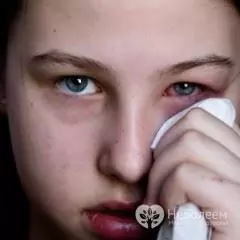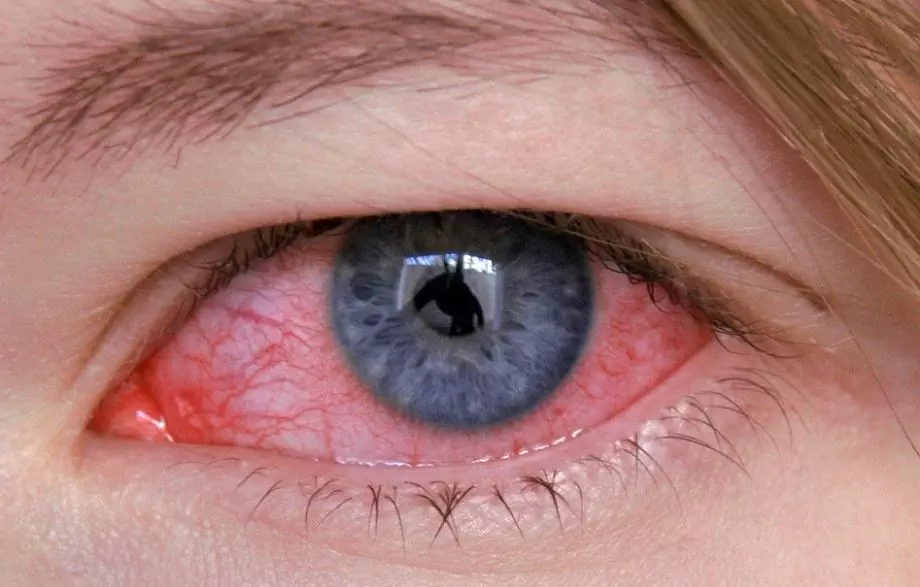- Author Rachel Wainwright [email protected].
- Public 2023-12-15 07:39.
- Last modified 2025-11-02 20:14.
Conjunctivitis: prevention and treatment

Conjunctivitis, or inflammation of the lining of the eye, is quite unpleasant. Therefore, it is important to know how to protect yourself from this disease and how to treat it.
Conjunctivitis is one of the most common eye diseases, which is inflammation of the conjunctiva of the eye (the outer transparent membrane that covers the inside of the eyelid and the eyeball). In this case, the disease is accompanied by an unpleasant sensation, as if sand were poured into the eyes, the eyes begin to redden and water. And if conjunctivitis is not treated, then suppuration may begin.
Precautionary measures
Conjunctivitis is most commonly a contagious disease. Therefore, if you find yourself with similar symptoms, you must carefully follow the methods of hygiene. First of all, use a separate towel and wash your hands with soap and water. Never rub your eyes, as in case of unilateral infection, the second eye may also become inflamed. You do not need to go to the pool and wash yourself with running water - the chlorine contained in the water can worsen the course of the disease. It is better to use only boiled water for washing.
The ideal option is to isolate yourself from others until complete recovery, or at least limit any contact with them as much as possible.
We treat conjunctivitis at home
If you find it difficult to endure pain, you may be advised to drip a couple of drops of a 20% sodium sulfacyl solution or a 0.3% chloramphenicol solution into the lower eyelid. It is necessary to bury the eyes every three hours. And as a preventive measure, you can bury a healthy eye, just use another pipette for this.
If you find it difficult to look into bright light, wear sunglasses, but do not put blindfolds on your eyes, as this creates an excellent environment for bacteria to grow.
Do not start the disease and do not treat conjunctivitis with various folk remedies, as this will only lead you to complications. With proper treatment, the disease will go away in four days, and in the case of a chronic form, in a month.
It is better, of course, to consult an ophthalmologist at the first signs of the disease.
Types of conjunctivitis and their treatment
The doctor will be able to determine the correct diagnosis after a routine examination. There are three types of conjunctivitis:
- allergic;
- bacterial;
- viral.

Naturally, different factors also become the cause of different types of the disease, therefore, different treatment must be prescribed. You should tell the ophthalmologist about all the circumstances that could cause the disease, as well as any adverse conditions at home or at work. Sometimes the ophthalmologist prescribes an additional examination from other specialists (urologist, gynecologist or allergist), or takes a scraping from the mucous membrane of the eye to identify the causative agent of the disease. After determining the cause of the disease, appropriate treatment is prescribed.
Allergic conjunctivitis is usually caused by a general allergic reaction in the body. It often occurs at certain times of the year or from the use of certain cosmetics. Most often, this type of conjunctivitis affects both eyes. Moreover, in addition to severe lacrimation and redness of the eyes, the eyelids often swell. For the treatment of allergic conjunctivitis, antihistamines are used in drops or tablets. In the case of mild symptoms of the disease, the use of artificial tears and cold compresses is sufficient. To prevent allergic conjunctivitis, it is enough to try to avoid direct contact with the allergen, which leads to undesirable consequences.
Bacterial conjunctivitis results from exposure to bacteria, usually staphylococci or streptococci. The hallmark of bacterial conjunctivitis is the discharge of pus and conjunctival edema, leading to sticking of the eyelids in the morning. To prevent this unpleasant symptom, it is enough to rinse your eyes with chamomile infusion. It is very simple to make an infusion and it will take no more than five minutes: pour two teaspoons of flowers with a quarter glass of boiling water and let it brew.
Acute forms of bacterial conjunctivitis are treated with eye drops (albucid or chloramphenicol), as well as ointments containing tetracycline. Medicines are used at least four times a day, and before instillation, the eyes are disinfected with strong tea or chamomile tincture. To protect yourself from bacterial conjunctivitis, you must follow basic hygiene rules.
Viral conjunctivitis most often occurs due to a weakening of the body's immune defenses or as a result of a viral infection. In this case, you must first cure the underlying disease and strengthen the immune system. For this purpose, the patient is prescribed antiviral eye drops (interferon) and ointments (zovirax, oxolin, etc.).
Found a mistake in the text? Select it and press Ctrl + Enter.






